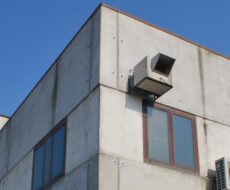
March 17, 2023
Seismic risk in the DVR (Risk Assessment Document) for safety in the workplace
The Risk Assessment Document (DVR), is a report that identifies and collects all the risks related to the health and safety of workers in relation to the activities they carry out and the places where they work, injuries that the worker could incur in the event that such risks are not treated correctly, and measures for prevention and protection from the aforementioned risks.

The Consolidated Law on Safety (Legislative Decree 81/08) at Article 28, states that: “risk assessment in the workplace must cover all risks to the safety and health of workers, including seismic risk”.
Specifically, Article 63 (in reference to Annex IV) indicates the stability and solidity requirements of workplaces: “buildings that house workplaces or any other work and structure present in the workplace must be stable and have a solidity that corresponds to their type of use and environmental characteristics,” thus also including the seismic risk of the area in which the building is located.
Furthermore, according to Article 64, the employer is responsible for ensuring that systems and places are subjected to regular technical maintenance, eliminating potential defects capable of compromising the health and safety of employees in the shortest possible time.
Standardized procedures for seismic risk assessment
In May 2012, the Permanent Advisory Commission for Occupational Health and Safety approved the so-called “Standardized Procedures” (implemented in Ministerial Decree 30 November 2012) for Risk Assessment and preparation of the DVR.
Among the dangers identified in companies, a series of natural dangers are mentioned in module 2 of the “Standardized procedures”, such as floods, inundations and earthquakes. Furthermore, structural failures are associated with these natural emergencies as examples of accidents and possible critical issues.
The seismic risk assessment must be attached to the DVR together with the appropriate current protection and prevention measures, the individual and collective protection devices applied following the assessment and also the procedures for verifying the soundness of the measures adopted.
How is a seismic risk assessment for the DVR performed?
There are three phases to create an annex regarding seismic risk.
Cognitive phase
The first phase is the cognitive and reconnaissance phase of the state of the building and the non-structural elements.
In this phase, information relating to the building is collected such as:
- the year of construction (pre/post seismic classification);
- the structural design (construction details, construction technologies, materials, etc.);
- the possible presence of certifications (seismic compliance, static testing, usability, etc.);
- the maintenance status;
- the seismic classification of the territory.
After the collection of personal and general information, a phase of collecting structural information follows, which includes:
the structural geometric survey (including any structural interventions undergone by the building over the years);
- the construction details;
- the list of non-structural elements relevant to safety (furniture, shelving, drop ceilings, cornices, etc.);
- the inventory of the systems;
- the material survey (i.e. the analysis of the materials used for construction and their characteristics).
Assessment phase
The second phase is the assessment and identification of any structural and non-structural failures or vulnerabilities relevant for safety purposes. In this part, it is necessary to supplement the DVR with the assessment of the risk associated with Seismic Hazard: it is essential to perform an analysis that takes into consideration all the safety parameters of the various elements, highlighting for each of them any indicators of vulnerability, and finally determining an outcome in terms of assessing the seismic risk of the workplace, which will be taken into consideration in the next phase.
Planning phase
The third phase is the planning one; based on the outcome of the seismic risk assessment, it is necessary to proceed with adequate planning of the methodologies to be used in order to reduce the risk factors as much as possible, such as:
- the preparation of specific intervention procedures in the event of a seismic event;
- the integration of Emergency Plans;
- the preparation of measures for the safety of non-structural elements;
- the planning of possible interventions to improve the safety levels of the structural and non-structural elements in cases where the risk assessment deems it necessary.
The prevention of seismic risk is therefore equivalent to the assessment of the degree of vulnerability and safety of buildings (both the structural and non-structural parts) and the planning of periodic maintenance interventions in relation to the information present in the DVR.
The employer must therefore also prepare the potential implementation of interventions that increase the level of seismic safety of the building such as, for example, seismic retrofitting of the building or more limited interventions such as seismic improvement or local reinforcement.






